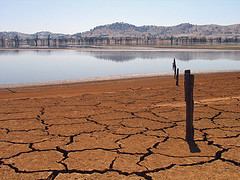April 24th, 2009 by Kevin Lindstrom | No Comments »
Canada Excellence Research Chairs – Phase 1 Competition Results
Overview
In 2008, the Government of Canada created a new permanent program to establish 20 prestigious research chairs–Canada Excellence Research Chairs (CERC)–in universities across the country. The CERC program invests $28 million a year to attract and retain the world’s most accomplished and promising minds and help Canada build a critical mass of expertise in the priority research areas of environmental sciences and technologies, natural resources and energy, health and related life sciences and technologies, and information and communication technologies.
Phase 1 Competition Results
The following 17 universities have been invited to compete in Phase 2.
Universities invited to Phase 2 competition
(Number of successful proposals arranged from West to East)
* University of British Columbia (4)
* University of Alberta (5)
* University of Calgary (1)
* University of Saskatchewan (1)
* University of Manitoba (1)
* University of Toronto (5)
* University of Waterloo (4)
* McMaster University (2)
* Queen’s University (1)
* University of Western Ontario (2)
* University of Ottawa (2)
* McGill University (4)
* Université Laval (3)
* Université de Sherbrooke (1)
* Université du Québec à Trois-Rivières (1)
* University of Prince Edward Island (1)
* Dalhousie University (2)
Click here for a list of the successful proposals
Submitted by Kevin Lindstrom Liaison Librarian
Posted in About this blog, Amusing stuff, Atmospheric Science, Chemical and Biological Engineering, Chemistry, Civil Engineering, Earth and Ocean Sciences, General Science, Geography, Main, Materials Engineering, Mathematics, Mechanical Engineering, News, Physics, Podcasts, Science - undegraduate classes, Statistics, Teaching, Uncategorized, Wood Sciences | No Comments »
April 23rd, 2009 by Eugene Barsky | No Comments »

A recent BBC article mentions research showing that some of the developing world’s largest rivers are drying up because of climate change, threatening water supplies in some of the most populous places on Earth, say scientists.
Researchers from the US-based National Center for Atmospheric Research (NCAR) analysed data combined with computer models to assess flow in 925 rivers — nearly three quarters of the world’s running water supply — between 1948 and 2004.
A third of these had registered a change in flow and most of them — including the Niger in West Africa, the Ganges in South Asia and the Yellow River in China — were dryer.
Rivers are losing water for a variety of possible reasons, say the researchers, including the installation of dams and the use of water for agriculture. But in many cases the decrease in flow is because of climate change, which is altering rainfall patterns and increasing evaporation because of higher temperatures.
The research will be published in the American Meteorological Society’s Journal of Climate next month (15 May) – available for the UBC community in electronic full text.
** Photo by suburbanbloke
Posted in Atmospheric Science, Earth and Ocean Sciences, General Science, Geography, Main, Science - undegraduate classes, Uncategorized | No Comments »
April 17th, 2009 by Kevin Lindstrom | No Comments »
Giving the green light for BC small hydro: independent power producers are taking up the challenge to develop British Columbia’s plentiful supplies of small hydro. Suzanne Pritchard reports. International Water Power & Dam Construction, Dec 2008 v60 i12 p40(2)
“Well known for its mountainous topography and abundant rainfall, the coastal regions of British Columbia can have more than 4m of rainfall per year. In addition, the province’s sheer size, run-off from snow melt and thousands of creek reaches mean it is also ideally suited for run-of-river hydro power. ‘There is phenomenal potential for small hydro here,’ says Mike Wise, vice chair of the hydro committee for the Independent Power Producers Association of British Columbia (IPPBC). ‘The hydro sites are just fantastic.'”
“Beyond British Columbia’s ideal geographic setting for hydro power is the unique ‘green’ design of the run-of-river projects. ‘This design is very different to hydro projects almost anywhere in the world. It is the sole reason why we are judged to have the lowest environmental impact,’ says Steve Davis, president of the IPPBC.
“‘We do not have big storage reservoirs,’ says Davis. ‘In fact, typical headpond is only the size of a soccer field. While most others have short, thick pipes in tall concrete dams, our projects have long, narrow steep pipes and low rubber weirs. Our glaciated hanging valleys and alpine lakes enable us to locate the projects above a natural fish barrier and still get lots of head. So unlike most other hydro projects we are able to avoid directly impacting fish habitat.'”
Want to be familiarize yourself with run of river research both in terms of both the environmental and engineering aspects? What are the issues? Want to separate the hype from the reality?
The following databases will gave you access to international research dealing with run of river power generation:
ASFA and Geobase will give you access to environmental and fisheries related research. Compendex is excellent for the engineering side of run of river power generation.
Submitted by Kevin Lindstrom Liaison Librarian for Earth and Ocean Sciences
Posted in Civil Engineering, Earth and Ocean Sciences, General Science, Geography, Main, Science - undegraduate classes, Uncategorized | No Comments »
April 16th, 2009 by Eugene Barsky | No Comments »

Since early April 2009, the access to INIS database has been opened to all Internet users around the world. Free, open and unrestricted access is available from the INIS Homepage, or directly from the following link: INIS Database.
This initiative provides easy access to reliable nuclear information on the peaceful uses of nuclear science and technology, including nonconventional literature, and makes nuclear knowledge readily available worldwide.
Established in 1970, INIS represents the world’s largest database of scientific and technical literature on a wide range of subjects from nuclear engineering, safeguards and non-proliferation to applications in agriculture, health and industry.
Currently, the INIS Database contains over 3 million bibliographic records and almost 200,000 full-text nonconventional documents, consisting of scientific and technical reports and other non copyrighted information.
** photo by clark
Posted in Atmospheric Science, Chemical and Biological Engineering, Chemistry, Earth and Ocean Sciences, General Science, Main, News, Physics, Science - undegraduate classes, Uncategorized | No Comments »
April 8th, 2009 by Eugene Barsky | 1 Comment »

New York Times was running an interesting article – “Concrete Is Remixed With Environment in Mind” last week which is certainly an interesting read.
The article discussed various ways to make environment friendly concrete.
A quick search in Web of Science database for (concrete or cement) AND environment* finds almost 9,000 articles on the topic.
A quick search in Compendex, a primary engineering database finds 12,000 articles, the last one published on April 4, 2009.
** Photo by Thomas Hawk
Posted in Civil Engineering, Earth and Ocean Sciences, General Science, Main, Materials Engineering, Mechanical Engineering, Science - undegraduate classes, Uncategorized | 1 Comment »
March 27th, 2009 by Kevin Lindstrom | No Comments »
Glacier change in western North America: Influences on hydrology, geomorphic hazards and water quality. Moore, R.D.; Fleming, S.W.; Menounos, B.; Wheate, R.; Fountain, A.; Stahl, K.; Holm, K.; Jakob, M. Hydrological Processes Volume 23, issue 1, p 42-61, 2009.
The glaciers of western Canada and the conterminous United States have dominantly retreated since the end of the Little Ice Age (LIA) in the nineteenth century, although average rates of retreat varied from strong in the first-half of the twentieth century, with glaciers stabilizing or even advancing until 1980, and then resuming consistent recession. This retreat has been accompanied by statistically detectable declines in late-summer streamflow from glacier-fed catchments over much of the study area, although there is some geographical variation: over recent decades, glaciers in northwest BC and southwest Yukon have lost mass dominantly by thinning with relatively low rates of terminal retreat, and glacier-fed streams in that region have experienced increasing flows. In many valleys, glacier retreat has produced geomorphic hazards, including outburst floods from moraine-dammed lakes, mass failures from oversteepened valley walls and debris flows generated on moraines. In addition to these hydrologic and geomorphic changes, evidence is presented that glacier retreat will result in higher stream temperatures, possibly transient increases in suspended sediment fluxes and concentrations, and changes in water chemistry. With climate projected to continue warming over the twenty-first century, current trends in hydrology, geomorphology and water quality should continue, with a range of implications for water resources availability and management and hydroecology, particularly for cool and cold-water species such as salmonids.
Volume 23 Issue 1 of the the journal Hydrological Processes is a Special Issue looking at the Hydrologic Effects of a Shrinking Cryosphere.
Submitted by Kevin Lindstrom Liaison Librarian for Earth and Ocean Sciences and Physical Geography.
Posted in Atmospheric Science, Earth and Ocean Sciences, General Science, Geography, Uncategorized | No Comments »
March 13th, 2009 by Kevin Lindstrom | No Comments »
Imagine no facebook, twitter, myspace, email, internet for a entire day?
Shutdown Day is a Global Internet Experiment whose purpose is to get people to think about how their lives have changed with the increasing use of the home computer, and whether or not any good things are being lost because of this.
The idea of Shutdown Day project is simple – just shutdown your computer for one whole day of the year and involve yourself in some other activities: outdoors, nature, sports, fun stuff with friends and family – whatever, just to remind yourself that there still exists a world outside your monitor screen.
For more information, go to Shutdown Day
Submitted by Kevin Lindstrom Science and Engineering Liaison Librarian
Posted in Atmospheric Science, Chemical and Biological Engineering, Chemistry, Civil Engineering, Earth and Ocean Sciences, General Science, Geography, Main, Materials Engineering, Mathematics, Mechanical Engineering, News, Podcasts, Science - undegraduate classes, Statistics, Teaching, Uncategorized, Wood Sciences | No Comments »
February 27th, 2009 by Kevin Lindstrom | No Comments »
BC Wood WORKS!/Canadian Wood Council annually host the Western Canadian Wood Catapult Competition on the UBC Campus in Vancouver BC. The third annual Wood Catapult Competition will take place at the UBC Campus in Vancouver on March 28th, 2009.
The purpose of the competition is to challenge registered college or university students to design and build a wood siege engine capable of accurately hitting targets at 20, 30 and 45 meters using a cement ball. Teams consisting of students and one faculty member submit a short report prior to the competition about their catapult design. On the morning of the competition each team will be required to give a fifteen-minute presentation to the judges, after their weigh-in and setup.
For information on the registering for this competition and technical requirements, go to the
BC Wood WORKS! Competitions website.
Background Reading
Denny, Mark. Siege engine dynamics. European Journal of Physics. 2005. 26 561-577.
Submitted by Kevin Lindstrom Liaison Librarian for Materials Engineering, Physics and Astronomy
Posted in Civil Engineering, General Science, Main, Materials Engineering, Mathematics, Mechanical Engineering, Physics, Science - undegraduate classes, Uncategorized, Wood Sciences | No Comments »
February 25th, 2009 by Eugene Barsky | No Comments »

The most recent Sci-Bites newsletter from Thomson Reuters reports that UBC CS department has the Highest Impact in Computer Science in Canada, ranked by average citations per paper, among Canadian universities that published at least 50 papers in Thomson Reuters-indexed journals of computer science & engineering between 2003 and 2007.
http://sciencewatch.com/dr/sci/09/feb22-09_2/
Congrats to our CS faculty and students!
** Photo by gillicious
Posted in General Science, Main, News, Science - undegraduate classes, Statistics, Uncategorized | No Comments »




